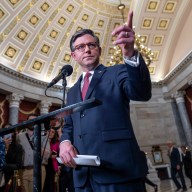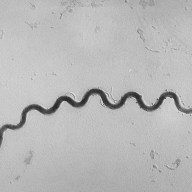CAPE CANAVERAL – Canada’s Julie Payette was poised once again to be launched into space Sunday as NASA officials gave the shuttle Endeavour the green light to blast off following three false starts.
NASA said the space shuttle suffered no damage from a violent electrical storm that crashed through Cape Canaveral two days ago, forcing the postponement of Saturday’s liftoff.
The space agency began fuelling up Endeavour on Sunday morning for the scheduled 7:13 p.m. EDT launch.
“Today is our day,” said Steve Payne, NASA’s shuttle test director.
Friday’s spectacular thunderstorm produced 11 lightning strikes that were within 0.3 nautical miles of the shuttle’s launch pad. Though the shuttle itself didn’t take a direct hit, NASA feared the electrical charge from nearby lightning bolts could have damaged critical electronic systems aboard the vessel.
The 16-day Endeavour mission will mark a historic moment for Canada when Payette meets up at the International Space Station with fellow Canadian astronaut Robert Thirsk.
It will be the first time Canada has had two astronauts in space at the same time.
Thirsk is spending six months at the space station, laying the groundwork for deploying Canadian robots onto other planets.
Payette, who was aboard space shuttle Discovery in 1999, is taking treats from home to space – including maple cookies, maple butter and Alberta beef jerky.
Saturday’s launch postponement was the third for the seven-person Endeavour crew in a month. The mission was postponed twice previously due to a potentially hazardous hydrogen fuel leak that has since been repaired.
The forecast for Sunday’s weather was better, with a 70 per cent chance that conditions would be favourable for the scheduled launch.
Stormy weather, technical failures and even a flock of woodpeckers have resulted in NASA having to delay the launch of various space shuttles over the years.
Florida, in fact, is the thunderstorm capital of the United States, and boasts a “lightning belt” between Orlando and Tampa. More people die from lightning strikes in Florida than any other state, and hurricanes are a problem in the spring and early summer.
One Canadian Space Agency official wondered aloud this weekend why Florida was chosen for the location of the Kennedy Space Center.
“Sometimes you have to wonder what they were thinking, putting it here and oceanside, instead of out in the desert in Nevada where conditions are much more steady and predictable,” he said.
Weather conditions must be almost perfect for NASA to launch the shuttle – rain, low cloud cover, nearby thunderstorms and high winds will result in liftoff being scrubbed.
Technical problems are also commonplace. A fully loaded shuttle weighs almost 590,000 kilograms and includes complex circuitry and moving parts that can malfunction.
In the past, tiny failures have resulted in disasters like the destruction of Challenger in 1986 and Columbia in 2003.
A flock of woodpeckers also once vexed the space shuttle.
In 1995, Northern flickers pecked about 200 holes in the foam insulation of Discovery’s external fuel tank. Some holes were as deep as seven centimetres.
The shuttle had to be rolled back indoors for repairs and its launch was delayed for a week.
NASA has until Tuesday or possibly Wednesday to send up Endeavour before making way for the launch of an unmanned Russian supply ship.
The mission will feature five spacewalks and complete construction of the Japan’s Kibo laboratory. Astronauts will attach a platform to the outside of the Japanese module that will allow experiments to be exposed to space.
















